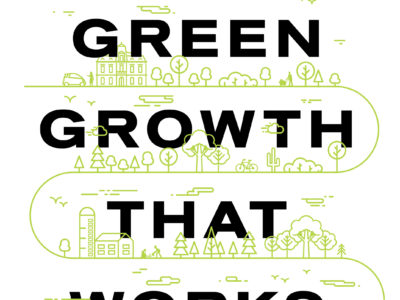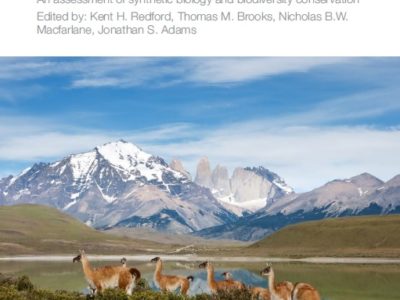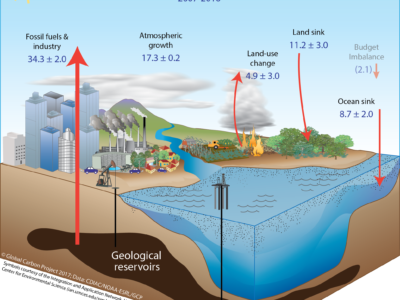Biodiversity & Species
Analyzing the revised ESA regulations (Intro)
Trump Administration revisions would make significant changes to how Act operates
The Trump Administration in August finalized some significant revisions to the regulations implementing the federal Endangered Species Act (ESA). Those revisions got a fair amount of press coverage, much of it fairly negative, even apocalyptic in tone. See this NY Times editorial “The Species Act, Endangered”. I’ve (belatedly) tried to do a thorough review of …
Continue reading “Analyzing the revised ESA regulations (Intro)”
CONTINUE READINGWhy is Newsom vetoing SB 1?
Comparing the Governor’s statements with the text of the bill
The California legislature recently passed SB 1, which would translate into state law a range of federal environmental and worker safety standards that were in place before the inauguration of President Trump to protect against federal roll backs in those areas. However, Governor Newsom has indicated he will veto SB 1, on the grounds that …
Continue reading “Why is Newsom vetoing SB 1?”
CONTINUE READINGGreen Growth That Works
New book explores natural capital policy and finance mechanisms from around the world
Since the Industrial Revolution, growth in human numbers and economic activity has dramatically transformed our planet. Rapid economic development has lifted hundreds of millions of people out of poverty and raised the standard of living and life expectancies of many more, but these forms of growth have also deeply eroded the natural capital embodied in …
Continue reading “Green Growth That Works”
CONTINUE READINGIs the Amazon Burning?
The current panic may not be justified, although long-term worries are
The environmental community is presently up in arms about fires in Brazil’s Amazon. The number of fires have dramatically increased over this time last year. A Greenpeace worker said, “This is not just a forest that is burning. This is almost a cemetery. Because all you can see is death.” France’s president Emmanuel Macron tweeted, …
Continue reading “Is the Amazon Burning?”
CONTINUE READINGTrump Administration Attempts to Eviscerate the Endangered Species Act
Rather Than “Improve” ESA, Newly-Adopted Regulations Dramatically Erode Its Historic Protections
The Endangered Species Act, enacted in 1973, has for most of its history been the most controversial and politically-charged of all the foundational environmental laws adopted by Congress in the 1970’s. But despite its contentious history, opponents of the ESA have been unsuccessful in their efforts to weaken the law, either through significant Congressional amendments …
Continue reading “Trump Administration Attempts to Eviscerate the Endangered Species Act”
CONTINUE READINGThe Flight of the Bumblebee
The Trump Administration loses an environmental case. Again.
Last Friday, the Fourth Circuit halted efforts to build a natural gas pipeline because the Administration had done such a lousy job of showing its compliance with the Endangered Species Act. This was one of the Administration’s many losses in court. The case involved a perfect example of “arbitrary and capricious” decision making, to use …
Continue reading “The Flight of the Bumblebee”
CONTINUE READINGEndangered Deference
The Supreme Court’s recent, misguided, Weyerhaeuser decision displays the Court majority’s hostility to agency expertise
Cross-posted from The Regulatory Review In Weyerhaeuser v. US Fish and Wildlife Service, a unanimous Supreme Court, with Justice Gorsuch not participating, indicated that it is not inclined to defer to agency expertise. Judicial power dominates this Court’s approach to administrative law, not just in the context of Chevron deference, and not just within the …
Continue reading “Endangered Deference”
CONTINUE READINGGoverning New Biotechnologies for Biodiversity Conservation
The fourth in a series examines how international institutions have responded
The previous two posts in this series described how and why genetically modified organisms (GMOs) could be introduced into wild populations, either “typically” modified ones that would transmit their altered genes ineffectively or those with “gene drives” whose changes would quickly propagate through the entire population. In both cases, their potential applications include helping conserve …
Continue reading “Governing New Biotechnologies for Biodiversity Conservation”
CONTINUE READINGGenetically Modifying Wild Populations
The third in a series examines powerful new gene drive tools
In my previous two posts, I introduced what I call first, second, and third generation genetically modified organisms: (1) GM bacteria for diverse, mostly indoor purposes; (2) GM crops and agricultural animals; and (3) GMOs that would be intentionally placed into natural environments, where they would live, reproduce, and transmit their modified genes to offspring. …
Continue reading “Genetically Modifying Wild Populations”
CONTINUE READINGIn Defense of Live Carbon
Why Stopping Deforestation May be the Hardest and Most Important Part of the Climate Change Challenge
When contemplating the enormous challenge of global climate change, it is sometimes helpful to think about a simple model of the global carbon budget (see figure below). These admittedly reductionist schematics distinguish between sources, sinks, and reservoirs. Fossil hydrocarbons from the geological reservoir–call this dead carbon—are extracted and burned to generate energy, emitting vast amounts …
Continue reading “In Defense of Live Carbon”
CONTINUE READING









